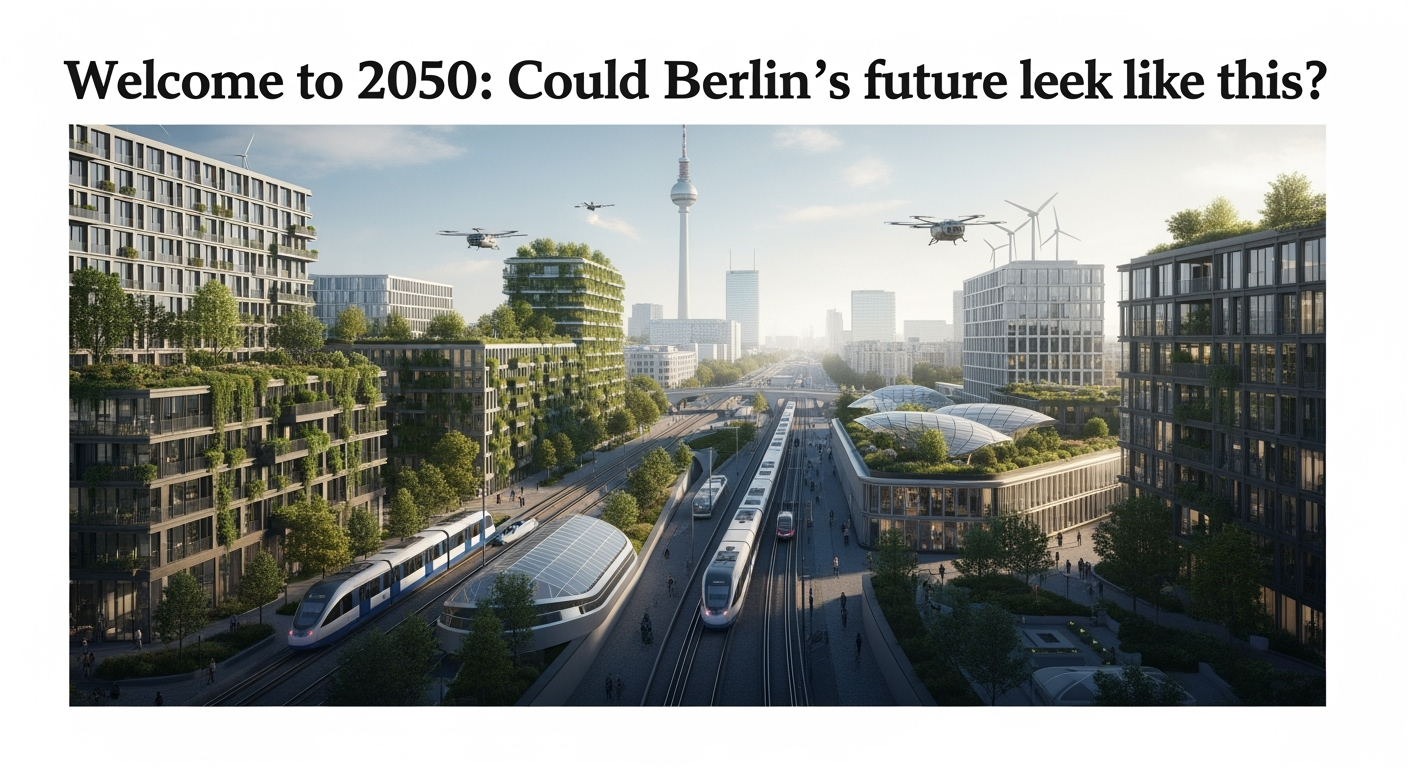Related Articles

The Unseen Costs: Dissecting the Dark Side of Viral Food Trends

Solar's Bold Horizon: Powering Earth and Beyond in a New Energy Era





Berlin, a city steeped in a history of constant transformation, stands poised on the brink of another profound metamorphosis, envisioning a future by 2050 where radical sustainability and innovative urban living redefine the metropolis. This potential future, shaped by current scientific insights and urban development projections, paints a vivid picture of a city that has comprehensively embraced a circular economy, transitioning to an entirely renewable energy infrastructure, pioneering advanced urban mobility, and fostering a deep-seated commitment to environmental stewardship among its residents. It is a narrative of conscious evolution, demonstrating how collective action against climate change could reshape a global urban center into a vibrant, resilient, and green haven.
At the heart of Berlin's potential 2050 transformation lies a monumental shift in its energy landscape. The city is projected to operate entirely on 100% renewable energy, a monumental achievement realized through an expanded rollout of solar panels and wind parks, complemented by robust regional energy sharing agreements. This ambitious energy system is designed for unparalleled efficiency, deeply integrated into the fabric of daily life. Buildings across Berlin, from new constructions to repurposed historical structures, are envisioned to be equipped with smart home systems that efficiently manage temperature control, utilizing geothermal heat pumps for both summer cooling and winter heating.
Beyond conventional renewables, the future Berlin explores novel energy generation methods. Telecommunication companies are anticipated to emerge as key players in the energy market, contributing to power generation through the heat produced by data centers and via solar panel-equipped buildings and radio masts. This energy is then distributed through an advanced "supraconnectivity" network over an XG infrastructure, representing a synergistic convergence of communication and energy technologies. This integrated approach not only ensures a clean energy supply but also cultivates a heightened awareness among citizens regarding energy consumption and resource utilization, fostering widespread water-saving practices and a mindful approach to resource management.
Berlin's physical environment undergoes a significant reimagining, prioritizing green spaces, efficient public infrastructure, and the adaptive reuse of existing structures. The city's transport system is projected to be remarkably efficient and accessible, featuring a diverse mix of e-scooters, trams, subways, trains, and bikes. A notable innovation includes free access to temperature-controlled underground carriages, offering a comfortable and uncrowded travel experience. Commuting is further revolutionized by designated tree-lined lanes for cyclists, integrating urban greenery with active transportation. Perhaps one of the most striking visual changes involves the transformation of former roads into extensive stretches of greenery, reclaiming urban space for nature and pedestrian enjoyment.
The concept of "densification and special optimization" guides urban development, emphasizing the revitalization and intelligent reuse of existing spaces rather than outward expansion. Berlin, known for its history of repurposing old buildings—such as factories transforming into cultural venues or Tempelhof becoming a vast urban park—continues this trend. The future sees fewer demolitions and more renovations, with a focus on developing vacant lots and brownfield sites within the city limits. This strategy aims to create new neighborhoods and connect existing waterways, particularly envisioning expanded canals and lakes between areas like the Spree and Landwehr canal, which would serve to cool the city and enhance the quality of life. These urban waterways could also become sites for floating cultural festivals, further enriching city life.
The daily lives of Berliners in 2050 reflect a deep integration of circular economy principles, moving away from a linear model of consumption and waste. This shift is evident in personal choices, such as fashion. Residents are embracing repurposed clothing from secondhand shops, participating in clothes swap events, or inheriting garments, often patching and personalizing them. This stands in stark contrast to the "fast-fashion" era, where garments were often worn once or discarded, contributing to vast amounts of textile waste shipped across oceans. The emphasis is on creativity, durability, and a mindful relationship with material possessions, signifying a profound cultural transformation regarding consumption habits.
Beyond fashion, the circular economy extends to locally-sourced food systems and an overall reduction in resource consumption. This localized approach strengthens community ties and reduces the environmental footprint associated with long-distance transportation of goods. The collective mindset of citizens plays a crucial role in this paradigm shift, with a shared sense of responsibility and ownership over the progress made towards environmental goals. This community-driven spirit underpins the success of Berlin's sustainable initiatives, transforming individual actions into widespread societal benefits.
The vision of Berlin in 2050 also encompasses significant societal and technological advancements. While personalized medicine has progressed to the point where some human organs can be cloned, this advanced medical intervention may initially be available primarily to individuals with sufficient financial resources or comprehensive insurance, reflecting ongoing challenges in equitable access to cutting-edge healthcare. Moreover, the societal landscape demonstrates an evolving understanding of human rights and diversity. Western societies, including Berlin, are projected to have achieved widespread acceptance of same-sex love and sexuality, building on decades of progress in public understanding and support for LGBTQ+ individuals. This reflects a broader cultural evolution towards greater inclusivity and acceptance, shaping the social fabric of the future city.
Technological integration continues to weave itself into the urban experience, not just in energy systems but also in the broader cultural sphere. While broader Germany is expected to see AI-driven finance and virtual reality trading floors in cities like Frankfurt, and digital galleries and AI-curated exhibitions in Dresden, these advancements hint at an overarching technological sophistication that would undoubtedly permeate Berlin's cultural and economic sectors. The cityscape itself might see historic landmarks standing tall amidst cutting-edge skyscrapers, potentially connected by aerial transportation routes, blending tradition with innovative design.
Berlin's potential future in 2050, as illuminated by these projections, offers a compelling narrative of what is achievable when a city commits to confronting climate change and fostering sustainable urban development. From its complete reliance on renewable energy and innovative waste management to its reimagined public spaces and forward-thinking social policies, this vision positions Berlin as a potential global blueprint for urban sustainability. This future is not a predetermined outcome but rather "just one possible version of 2050 if the world acts to slow climate change," serving as a powerful reminder that the trajectory of urban evolution is ultimately shaped by collective human action and political will. The city's inherent capacity for reinvention, its continuous influx of diverse populations, and its willingness to embrace new ideas suggest that Berlin could indeed lead the way in crafting a greener, more equitable, and technologically advanced urban future for its citizens and serve as an inspiration for the world.